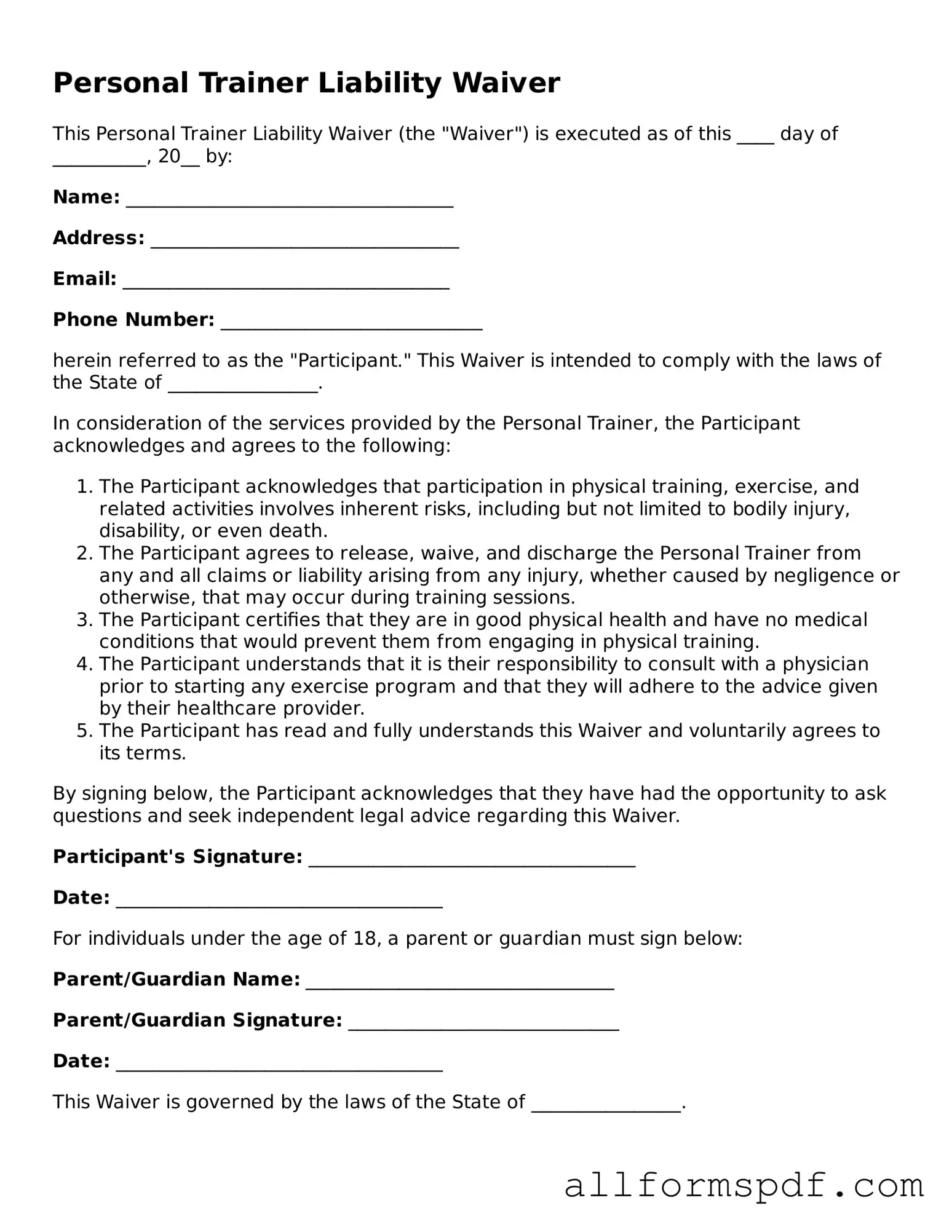Printable Personal Trainer Liability Waiver Form
The Personal Trainer Liability Waiver form is a legal document designed to protect personal trainers from potential lawsuits arising from injuries or accidents that may occur during training sessions. By signing this waiver, clients acknowledge the inherent risks associated with physical exercise and agree not to hold the trainer responsible for any unforeseen incidents. Understanding this form is crucial for both trainers and clients to ensure a safe and professional training environment.
Create My Personal Trainer Liability Waiver Now
